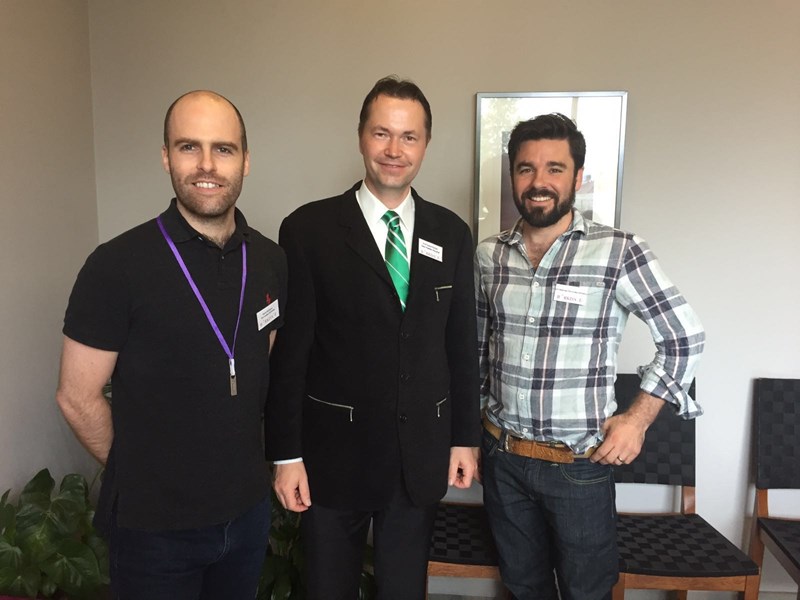
09 June 2016
The month of May was even busier than usual for our orthotists Sam Walmsley and David Williams. They attended a two-day Masterclass at Birkdale Neuro Rehabilitation Centre where Prof Daniel Becker M.D. lectured on the latest Functional Electronic Stimulation (FES) techniques. FES is being pioneered as a treatment for spinal injury patients. As the director and founder of the International Neuro Rehabilitation Institute, Dr Becker is considered to be at the forefront of this medical advance, so naturally Sam and David were excited to join this event and explore how FES can be applied in conjunction with orthotic treatments to improve the outlook for spinal injury patients. Spinal injury can result from a variety of scenarios, including trauma injuries, spinal infections, such as Transverse Myelitis and the ongoing effects of degenerative conditions such as multiple sclerosis.
Functional Electric Stimulation or FES is the use of electrical stimulation to contract muscles via electrodes placed on the skin. The stimulation of those muscles then produces a functional movement of the affected limb and is coordinated by a triggering system such as a footswitch of a movement sensor.
Dr Becker and his team are involved in research that suggests that FES combined with targeted, controlled exercise can actually rewire the brain’s neurology to rehabilitate the spine.
More general information about FES can be found on our Functional Electronic Stimulation web page.
Dr Becker is also an expert in stem cell therapy and adheres to the principle first put forward by Göttingen University’s Siegrid Löwel that “cells that fire together wire together”. Recent news stories have highlighted medical techniques where stem cells are implanted in the body to try and regrow the nervous system. But Dr Becker’s research has shown that, in fact, we already have stem cells present in the spine and all over our bodies. When the body experiences an injury, the stem cells travel to the site of the injury. But research suggests that when they arrive at the injured site they don’t “switch on”.
So the problem is not to do with the location of stem cells, it’s actually to do with working out how we can activate them at the injured site. Dr Becker believes from his research that the best way to do that is through a programme of targeted exercise combined with FES, to stimulate the stem cells to promote regeneration.
Often, patients with severe spinal injury or trauma are treated in a time-bound way. It tends to be the case that if no improvement has been shown within a specific time period then the patient will be assessed as having no further chance of recovery. But there is a growing body of research to suggest that, when a programme of FES and targeted exercise is undertaken, recovery can actually be possible even in the longer term. That’s a significant development for spinal injury patients who may have previously believed that there is nothing more that can be done and that they face a lifetime of paralysis.
For LOC, the potential exists for us to harness this growing understanding of stem cell recovery by combining FES with an advanced programme of bespoke orthotics that can support and stimulate the right exercise. This can open new doors for patients who may have thought they are beyond any improvement.
This type of treatment is not easy and it’s not a magic button – the process requires hard work from patients and it’s vital that a programme of FES and orthotic exercise is coordinated with conventional drug therapy and a well-designed physio programme. But research and case studies so far do suggest that the right combination of these treatments can bring new hope for patients – and the potential to harness FES to treat our own patients is something that LOC is very excited about.
If you would like to find out more about this subject or talk to a LOC orthotist about spinal injury treatment, simply contact LOC online or call us on 0208 974 9989.
We have the following facilities and amenities at our Kingston Upon Thames location:
We also have the Gait Laboratory for orthotics patients and Onsite Manufacturing for speedy turnarounds and adjustments whilst you wait.
Clothing worn is dependent on which clinic you are attending. You will be sent a letter detailing what clothing to wear along with all other details prior to any appointment at the clinic.